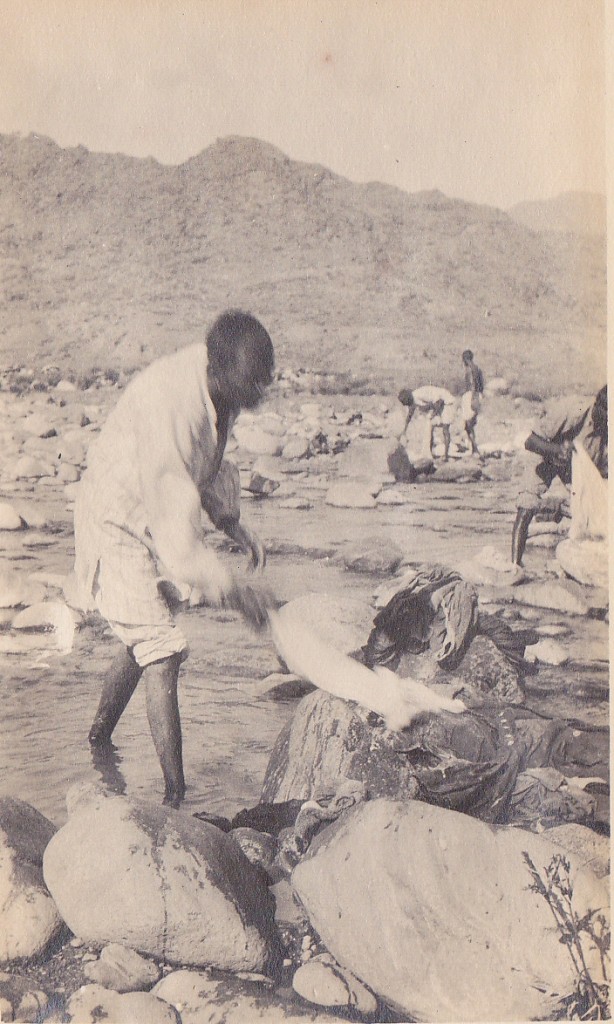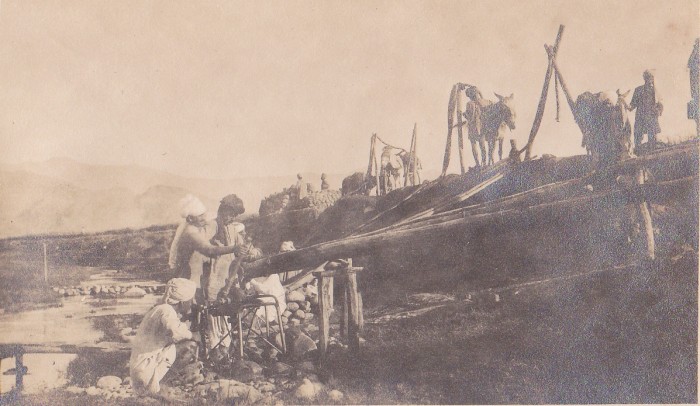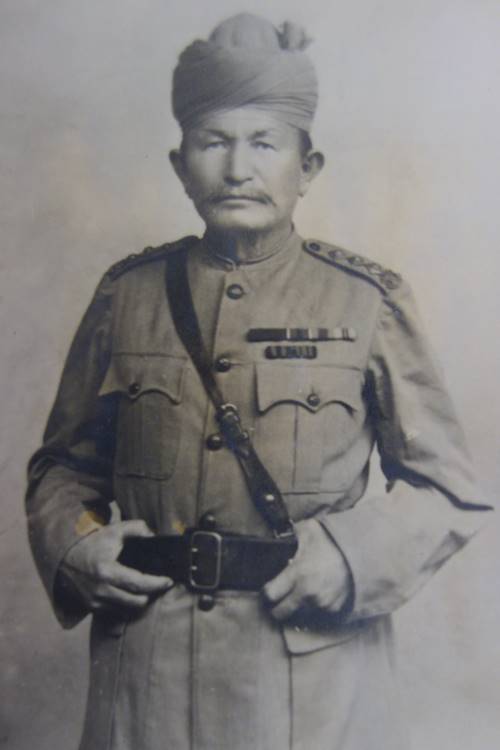This article will provide you with a glossary of the Indian Army’s ranks and appointments during the First World War. I have written a series of guides to help you research soldiers who served in the Indian Army during the First World War which can be viewed by clicking on the link below:
Indian Army Ranks of the First World War
The table below contains a list of Indian Army ranks and their British Army equivalents. However, care should be taken when comparing Viceroy’s Commissioned Officers (Jemadar and above) with their British counterparts (who held their commission from the British Crown), as even the most senior Viceroy’s Commissioned Officer was subordinate to the lowest-ranked British officer.
| Indian Infantry | Indian Cavalry | British Infantry Rank | |
|---|---|---|---|
| Sepoy | Sowar | Private | |
| Lance-Naik | Acting Lance-Daffadar | Lance-Corporal | |
| Naik | Lance-Daffadar | Corporal | |
| Havildar | Daffadar | Sergeant | |
| Havildar Major | Kot-Daffadar | Sergeant Major | |
| Jemadar | Jemadar | Lieutenant | |
| Subadar | Risaldar | Captain | |
| Subadar Major | Risaldar-Major | Major |
Glossary of Indian Army Ranks and Appointments
Acting Lance-Daffadar: An Indian cavalry rank equivalent to Lance-Naik in the Indian infantry and Lance-Corporal in the British Army.
Bhisti: A follower in the Indian Army who served as a water carrier, transporting it in a large goatskin slung over his back. They were known for their bravery on the battlefield in supplying water to wounded soldiers at grave personal risk. The eponymous hero of Rudyard Kipling’s Gunga Din served as a Bhisti to a British unit.
The uniform ‘e wore
Was nothin’ much before,
An’ rather less than ‘arf o’ that be’ind,
For a piece o’ twisty rag
An’ a goatskin water-bag
Was all the field-equipment ‘e could find.
Gunga Din by Rudyard Kipling
Coolie/Cooly: An unskilled Labourer.
Dhobi: A follower who served as a Washerman. The photograph below shows Dhobi hard at work during the Swat Valley Campaign on the North West Frontier in 1915.
Daffadar: A rank in the Indian cavalry equivalent to a Sergeant in the British Army.
Follower: Indian units had a complement of non-combatants that would follow the unit around the cantonment towns of India and went with the unit on campaign. Followers included Bhisitis, Cooks, Sweepers etc.
Havildar: A non-commissioned officer rank equivalent to a Sergeant in the British Army.
Jemadar: The most junior viceroy’s commissioned officer rank. In 1914, each infantry regiment had eight Jemadars, and it would typically take a Sepoy over ten years to rise to this rank. Promotion was based on merit.
Khalasi: Dock worker / Lascar.
Lance-Daffadar: A non-commissioned officer rank in the Indian cavalry equivalent to a Corporal in the British Army.
Lance-Naik: A non-commissioned officer rank equivalent to a Lance-Corporal in the British Army and Acting Lance-Daffadar in the Indian cavalry.
Langri: A Cook.
A langri (cook) of a Sikh regiment whom I was talking to one day not far behind the firing-line said to me, “We like cooking close up to the trenches, or otherwise the Government may refuse to give us a clasp to our medals,”.
With the Indians in France by Sir James Willcocks
Munshi: Secretary.
Mutsuddy: Accountant / Clerk.
Naik: A non-commissioned officer rank equivalent to a Corporal in the British Army.
Pakhali: A man who fills a pakhal (water container) and distributes the water. The photograph below shows Pakhallis during the Swat Campaign on the North West Frontier 1915.
Private Followers – These followers were men whose services were deemed non-essential to running the unit and were paid for by the officers and men. When the 6th Jat Light Infantry embarked for France in September 1914, they took eighteen private followers.
Public Followers – These were followers whose services were deemed essential to the running of the unit and were paid for by the government. When the 6th Jat Light Infantry embarked for France in September 1914, they took twenty-seven public followers.
Risaldar: A viceroy’s commissioned officer rank in an Indian cavalry regiment, equivalent to a subadar in the Indian infantry and a captain in the British Army.
Risaldar-Major: The senior viceroy’s commissioned officer in an Indian cavalry regiment. The equivalent rank in an Indian infantry regiment was Subadar-Major.
Sarwan: A Camel Driver.
Sepoy: The lowest enlisted rank in the Indian infantry with its equivalent being a Private in the British Army. Though the majority of Indian infantry regiments used the rank of Sepoy, the Gurkha Rifles 104th Wellesley’s Rifles and other units used Rifleman. Meanwhile, infantry regiments from southern India tended to use Private.
Sowar: The lowest enlisted rank in the Indian cavalry and equivalent to a trooper in the British cavalry.
Subadar: The second-highest viceroy’s commissioned officer rank, which would usually take a Sepoy at least twenty years to reach, with promotion based on merit. In 1914, there were seven Subadars for each infantry regiment.
Subadar-Major: The senior viceroy’s commissioned officer in an Indian infantry regiment and the right-hand man of the commanding officer. These were long-serving soldiers who had been promoted through the ranks on merit and would have been aged into their forties on appointment.
Lal Singh enlisted into the 14th Regiment of Bengal Infantry (The Ferozepore Sikhs) in July 1887. Rising through the ranks, it took him seventeen years to reach Jemadar, and nearly eight more to become a Subadar in May 1912. Two years later, in July 1914, he was appointed as the regiment’s Subadar-Major. He was killed less than a year later at Gallipoli during the Third Battle of Krithia on 4 June 1915 and is commemorated on the Helles Memorial.
Below is a photograph of Honorary Captain Dost Muhammad O.B.I. I.D.S.M. Sardar Bahadur who was Subadar-Major of the 106th Hazara Pioneers between 1904 and 1917.
Syce – A Groom. Syces weren’t limited to cavalry regiments in the Indian Army, as infantry regiments used them to look after the officers’ horses.
Woordie Major: The Indian Adjutant of a cavalry regiment, usually an appointment held by a Jemadar.



